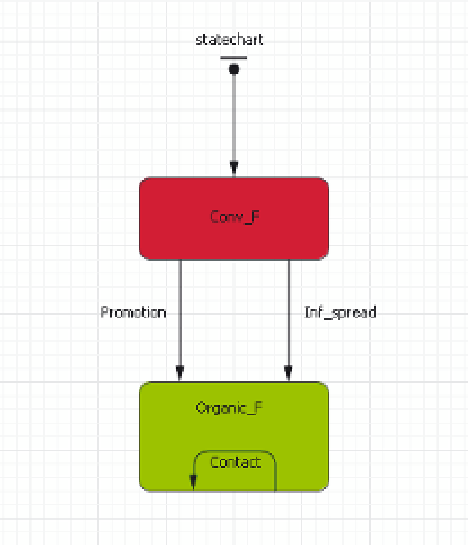Information Technology Reference
In-Depth Information
considered. This approach is promising since it is possible to model whole agricultural
sector where each particular farm is taken into account. Initially one initializes the particular
number of agents, in our case 2000, since this is the number of potential farms for transition.
The model is based on the Bass diffusion agent-based model. The number of farms is set to
2000 since the agent model with 20.000 farms would take too much time to run. Initially all
the agents are painted red since all the farms are conventional. During the simulation agents
transform from conventional to organic farms, which could be observed on the graphical
view; the agent turns from red to green. Since the agents could transform from conventional
farms to ecological in two ways there are two different border representations. If the agent
performs transition on account of the promotion, the border of the agent turns yellow. If
agent performs transition on account of other causes, the border turns blue. In this manner
one could easily estimate how many agents performed transition in particular was as well as
how fast particular transition occurred during simulation.
Fig. 5. Agent-based simulation model of transition to organic farming
3. Results
Table 1 shows the parameter values for the eight scenarios performed on the developed
system dynamics model. SC1 is the initial scenario where the initial amount of the subsidy is
provided (1000). This would mean that there are some resources provided by subsidy to
support 1000 organic farms.
Figure 5 shows results of eight different simulation scenarios. One of more important
findings is, that the system is sensitive to the changes in demand. If one observe scenario 7
and 8, where the population is changed only for 50k and 100k, once could observe, that the
conversion to the organic farming would be jeopardized.


Search WWH ::

Custom Search